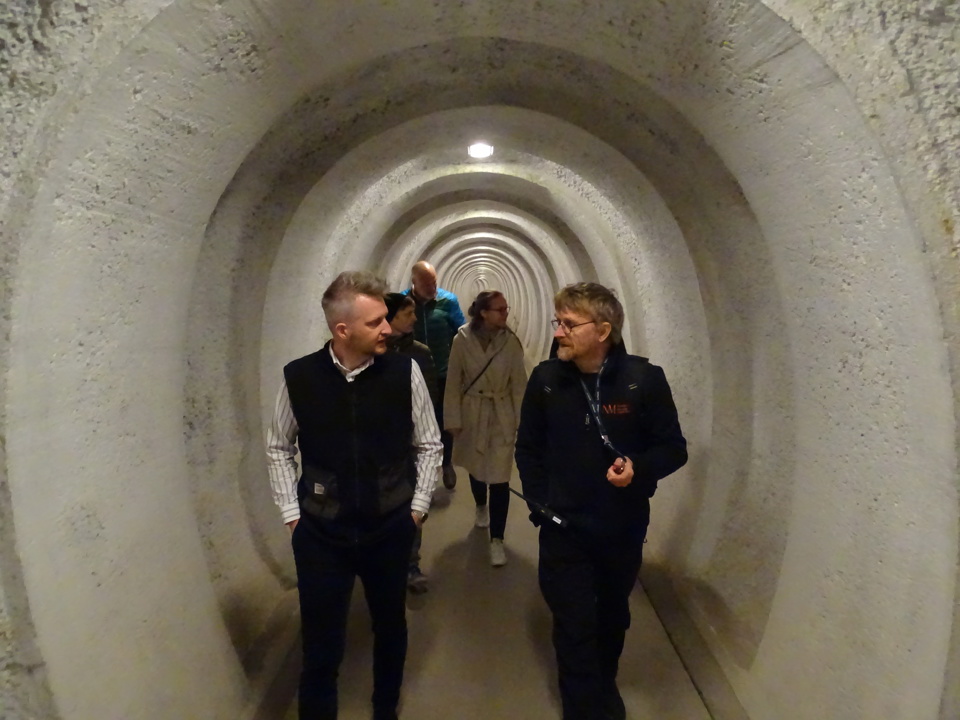News
Carbon Capture scientists goes underground in nuclear safe bunker
Published online: 28.04.2023
What’s the link between a nuclear safe bunker for the government and how to reduce CO2 in the atmosphere through carbon capture?

2023.04.28 Carbon Capture scientists goes underground in nuclear safe bunker
News
Published online: 28.04.2023
What’s the link between a nuclear safe bunker for the government and how to reduce CO2 in the atmosphere through carbon capture?

By Lars Raakilde Jespersen
Well, scientists are curious people, who like to learn. So are museum curators and conservators. That’s why an unexpected and unusual meeting took place - in surroundings that are “quite something special”.
Several hundred meters into the limestone rock in Northern Jutland, and 60 meters below surface, scientists from AAU Energy met with employees from Nordjyske Museer, discussing technical solutions and chemical processes.

The Site was REGAN Vest, which used to be a secret, nuclear safe bunker for the Danish government and monarch, but now is a museum with unprecedented success since opening in February.
The participants were head of AAU Energy, Lasse Rosendahl, associate professor Thomas Helmer Pedersen, who is leading the carbon capture research-mission at the institute, Ph.D. students Maria Maigaard Paulsen and Sebastian Bruhn Petersen, all of them deeply immersed in helping the climate challenge by reducing CO2 in the atmosphere. They met with museum curator Ulla Egeskov and conservator Per Hadsund.

The subject? Well, the nuclear safe bunker was built in the early 1960’s to be able to shut off the surrounding world completely, like a submarine in the rock, which means there is a facility for reusing air by removing CO2 and adding oxygen. Simply to make it possible to survive underground.
The large vessel for CO2 removal, the barrels with respiratory lime and the extensive ventilation system and control systems, that made sure carbon capture was active if CO2 limit was exceeded (with a surprisingly high limit at 2%), was opened and studied. Questions over chemical processes were discussed as deeply as the meeting itself was into the rock. There will be further discussions and exchange of knowledge, and samples taken and analyzed. Not that the answer to carbon capture lies buried there, deep into the old nuclear facility. But as you know, you can always learn - and those scientists and museums curators by nature are so curious.
Contact
AAU Energy: Thomas Helmer Pedersen thp@energy.aau.dk : (+45) 2829 1679
Koldkrigsmusset REGAN Vest (+45) 9931 7400